Click below to watch the video:
Who were the prophets Hud and Salih? Where do they fit in history and geography? Why did they make Muhammad’s hair turn grey?
Transcript
Video #20 *This is a general transcript of a Dan Gibson video in the series: Archeology and Islam.*
Hello, and welcome to another video in the series Archeology and Islam. My name is Dan Gibson and in this video we want to examine the two prophets known as Hud and Salih.
Information about both of these prophets is found in the Quran where Hud is mentioned 7 times and Salih is mentioned 10 times. But outside of the Quran, it is a problem finding anything about these prophets. I have not found them in any of the hadiths except once in Al-Tirmidhi’s hadith which we will look at, at the very end of this video.
Hud and Salih are NOT found in the archeological records, and not even their names are founded, not common anyway in graffiti that’s written all over the Middle East from the Levant all the way down into Saudi Arabia. Everything we know about them comes from the Quran with just a little added information from some old Arabian folk tales. But it is very hard to tell what is accurate and what is not accurate in those folk tales.
Now, around 170 years after the Hijra, Al Kisai wrote a book: Stories of the Prophets, in which he included some further information taken from earlier folk accounts. These are not reliable accounts so we can’t use them as real academic sources. But they do provide some interesting ideas of what was thought long ago.
For instance, while the Quran tells us that Hud lived during the days of the people of Ad, it mentions Ad’s lofty pillars. But the story grew with the retelling of folk tales that were told and retold; each time adding some more to the story until the story just grew up. And it ended up that the people of Ad and the city of Iram was in an unexplored area of Yemen.
I imagine it was there, as all the other cities around so they had to pick some place that was isolated and so they picked that place, some place off in Yemen down over in the mountains. So the descriptions of Iram grew until the loft pillars in the Qur’an became multi colored columns adorning the houses. The city grew until it was over five kilometers in every direction; the walls were now red bricked and um, 200 meters high and 10 meters across, with four huge majestic gates.
It contained 300,000 villas with a thousand pillars of gold-bound jasper. In the villas, the floors were great pearls and fist-sized balls of spices like musk and saffron.
When one looked down from the great roofs or from the balconies of the villas they could see rivers of water, like running under them. The main streets were lined with fruit trees and with tall palms, and the stories go on and on.
It is said that when the news of this city reached Muawiyah, son of Abu Sufyan, who was the Caliph; but he had not yet moved his capital to Damascus, he wrote about this down to his lieutenant in Sanaa of Yemen, and he said ah, send your historians and your story tellers, I want to question them about the truth of the reports.
Even after he heard their claims, he could not believe them. These old men told him that Allah had blotted out the road which led to the city, and so it will stand unchanged, undiscovered until the day of Resurrection and the Hour of Judgment.
Now those are the stories that are told. That is not from the Qur’an. It is not even from the Hadith. It is just from ancient stories.
In this story there are bits and pieces of truth. The city of Iram, and the people of Ad did exist but they are now lost. That much I can accept.
Now, there are a couple of abandoned cities in the deserts of Yemen, most dating back to the time of the collapse of the Main Dam. And so ruins do stand in the desert. I have personally visited some of these places.
Here are some of the ruins sticking out of the sand in the desert. Now these have been excavated today, when I was there years ago, I took pictures of these ruins. And there is a complete walled city, standing empty in the desert.
But there is no gold, no silver, no spices, and no city of Iram, and no evidence of the ancient people of Ad in Yemen. However, even to this day, I find historians and some scholars who still repeat old the stories about the people of Ad, and the buried cities in the desert of Yemen, or just over the border in Oman, and so forth.
I first entered the Empty Quarter in 1981, and I have traveled through Oman and Yemen. I have visited places and photographed many places, but I have not found a single piece of firm evidence that supports the famed colonnaded city of Iram in Yemen or Oman.
That doesn’t mean it does not exist. I think it does exist, and I think I know which pile of ruins is that city. But, once again, it is a geographical problem. I think the ancient story tellers did us a disfavor, but identifying a place in Yemen that was inaccessible to most people. In the end, everyone started looking in the wrong places. All down through history, the stories that have been told, and poems have been written, and they all sort of focus on Yemen, the wrong place.
Now I find these two prophets are fascinating and I think we can learn a couple of very important lessons from them about archeology and the Qur’anic record.
First, from the Quran we learn very little about the geography of these stories. We are not told where these two prophets were, other than the people they were associated with; Ad and Thamud. We can infer answers, and we are told very little direct information.
Of the references we have, in the Qur’an to Hud and Salih, a number of them are just lists of prophets. So we can ignore those.
So let’s start with Hud. The Quran says: “And to Ad, their brother Hud, He said: O my people: serve God.” This is the only geographical reference we have. And the trouble is, there is great disagreement over where Ad was located, and to this days, no ruins have been found that can be definitely associated with some ancient kingdom known as Ad.
Among Muslims scholars, the most common place quoted, is a valley between Yemen and Oman. Some call it: Wadi al-Mugheeth. Now when I was a young man, I spent nearly four years in Yemen. During that time I and several of my friends searched many fascinating places. Among the places I was interested in, was finding this famed Wadi Mugheeth.
Today I am convinced that the land of ‘Ad was not in a valley by that name, and definitely not in Yemen, or Oman.
And as I have said before, I believe that in ancient times, there was a great federation of Arabian tribes that swept across the Arabian grasslands. These grasslands have since turned into desert.
These horsemen of Arabia have left their memory in Jordan, Saudi, Yemen, Oman, even in Syria. So there is a memory of this nation in Yemen and in Oman, but they are not exclusive. Those memories also come from many other different countries. I believe the Egyptians called them the Shasu.
And once they were organized, this federation of Shasu, these tribesmen over ran the Arabian Peninsula and even invaded down into Egypt. After a hundred years in Egypt; the Egyptians threw them off, and the federation disintegrated, and individual tribes emerged.
I believe that their base of power was in the Mountains of Seir, based on the ancient name of Uz in the Bible which I think points to these mountains. Plus I think that the descriptions of Ad fit the Uz story, and I think their names are very close to each other. One is ‘Ath (‘Ad), and one is Uth; (‘Uz) and so if you put those together, they are very similar.
Now in the Qur’an, Hud warns the people of ‘Ad to follow God or judgment’s going to come. We are given a hint when in verse 69 of the Qur’an associates Ad with the successors of Noah, thus placing this story at a very early date. These are the people after Noah. I place the formation of this federation somewhere between 1680 BC - 1580 BC, when at the end, Ahmose I of Egypt defeats them and expels them and throws off this federation of Arab tribes, which breaks them, and individual nations of Edom, the Amalekites, Moab, Midian, and the Amorites emerge.
It is at this time that the Hittite and Hivite people also begin to emerge, although the Hittites, who moved north, will not reach their zenith for another 200 years. This explains the emergence of all of these small groups, sort of at once in the Levant area.
The presence of this very old story in the Qur’an is a testimony to the power of oral communication. By the time Muhammad addressed this story, two thousand years have passed. And still the story is alive. It finds its way into the Quran; and it finds its way into the stories told by the bards and the traveling story tellers.
Because, five hundred years after Muhammad died, the storey is still alive. At this time, during the early Abbasid era, the stories are beginning to be written down in various collections. They had different titles, and there were various collections of stories by different writers at different times.
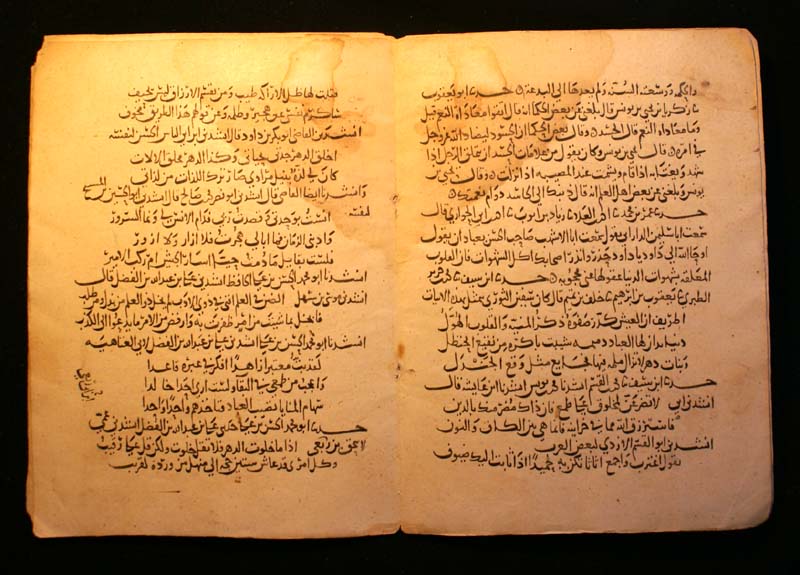
Page from early stories
Now, here is the photo of a page from a collection of stories, written down in the early Abbasid period. So these books were around and they were there.
The Persians, later, get a hold of this story, and put it together, and wrap it all up as one continuous story one after the other, and they call it: A Thousand and One Nights. And yet, if you go back, you will find that some of these stories go very far back in history.
So Hud can be found in three places: The Quran, early stories told in coffee shops and bazaars, and in the book written by Ibn Kisai, known as “Stories of the Prophets.” This was the first of several books with the same title. So it is not a well known book, but it is out there.
Now in the Qur’an in chapter 11, there is this chapter, there is a chapter named “Hud” it starts with a warning to people that they should submit to God. First Noah is addressed, and we hear his message, warning the people of his day that judgment is coming, and it will come in the form of a flood.
This takes us all the way to verse 50, where the subject switches to the prophet Hud and the people of Ad. Once again the messenger warns them to turn to God or judgment will come. Chapter 11, called Hud does not tell us what the judgment will be. It is not until we get to chapter 26 in the Qur’an that we begin to learn more about the people of Ad and what happened to them.
Again Hud come as a warner, and in this chapter it repeats much of his message. Then we are told in verse 128 that the people of Ad build on every high place. This is significant, because it signifies mountains and high places.
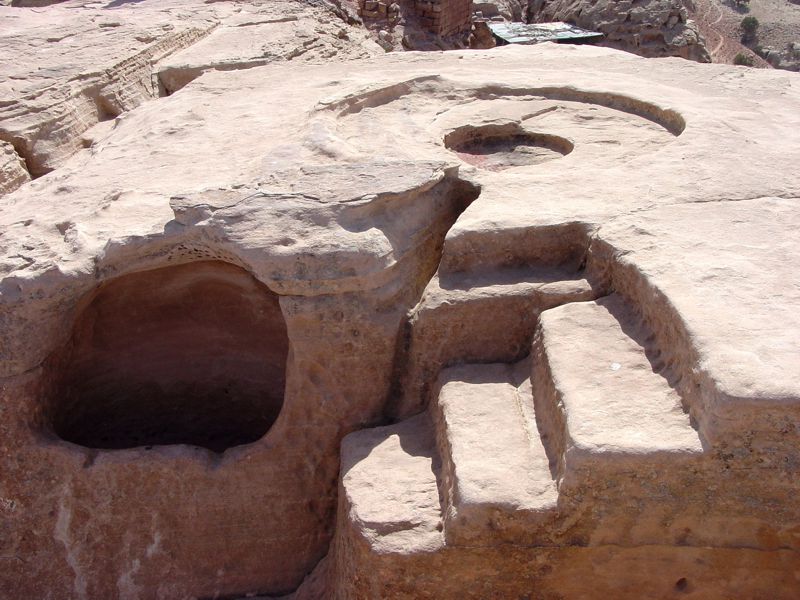
Pagan Altar in Petra
It also refers to pagan altars being built on these locations. I have visited many of these kinds of altars in the Middle East; High Places: here is one, and here is another one, now this altar has two parts to it, one for killing the animal and draining the blood, and the second altar for burning the animal.
The Quran tells us that the people of Ad started to build altars on the high places, and even strongholds in the mountains. Between the mountains were valleys with gardens and springs of water. So Ad lives in a mountainous country with lush valleys; and they made altars on the mountains. Then it adds: Dost thou not consider how thy Lord dealt with Ad, with many columned Iram, the like of which was not created in the lands? We will come back in a moment to Iram.
But first, let’s look at Sura 89 of the Qur’an and here read: “
“*And the Ad, they were destroyed by a great and furious wind, exceedingly violent. He made it rage against them seven nights and eight days in succession: so that thou couldst NOT see the people lying prostrate in its path.*” Quoting from an English version of the Qur’an. So what is this story? It repeats itself several times in the Qur’an.
First, Noah came as a warner of coming judgment if the people did not change, and the earth was destroyed by a flood. And it was.
Then Hud came to the people of Ad as a warner of coming judgment, but they did not change, and they were destroyed, and that destruction came by a great wind.
And in the Biblical story of Job, the people living in the land of Uz, also with that name and they were also destroyed by a great wind.
So both the land of Ad and Uz are destroyed by a great wind. I see them as the same. They are about the same time, and they have a very similar name and both of them were destroyed by a great wind and both of them live in mountainous area, and people are building altars and high places, and gardens in the valleys.
This is not Wadi alMugheeth in Yemen it is up in southern Jordan, in Mount Seir, which much later is where they built the city of Petra.
So in summary, I place the prophet Hud around 1750 BC, in the land of Edom which was called the land of Uz at that time.
I see an association between the names Uz and Ad as I said. And I place this story in the Petra mountains, and I place the city of Iram in the location of Wadi Rum. And the great columns in Wadi Rum are that great mountain cliffs that surround the city. Lawrence of Arabia, not knowing about ‘Ad in the Qur’an, he called them the Seven Pillars of Wisdom. He wasn’t even thinking of the people of ‘Ad, but he recognized these great pillars made out of the mountains the way that they were shaped. Since these suras are called Meccan Suras, they would have been given in and around the city of Petra. Muhammad need only to point to the high place altars on every mountain, and the gardens in the narrow lush valleys.
He only need to point out and make a reference to the loft pillars of Iram and everyone knew what he was talking about.
You see, Muhammad was speaking to the people who lived right in that location where they were. This was their history. So he didn’t need to explain to them where the land of Ad was located. His audience knew where they where and his audience knew what he was talking about.
Next we come to the prophet Salih. Again, we struggle to know where he was and to whom he was speaking.
Salih also comes as a warner, to tell of future judgment. But he comes to the people of Thamud. In this case, I understand the name Thamud to be made up of two words: Tham - which means before, and Ud there again is the people of ‘Ad or the people of Uz or just called Thamud… the people who come after Ud. And this is put together and this is ah, the people of Thamud.
And we have a problem finding a tribe of Thamud, because there is no tribe named Thamud. It simply references the people who took over the area after the people of ‘Ad.
If we understand this as being the people that lived in the greater Petra area after Ad, then it seems to be a reference to the Nabataeans.
Now, there is something we need to get clear here. There are two usages for the word Nabataean. One of them applies to language. So linguistically there were Nabataeans, who spoke the Nabataean language. They are the true Nabataeans if you want us to put it that way.
But there is another group of Nabataeans. And it includes those people who joined with the Nabataeans, or who were part of a federation of tribes, that worked and co-operated together in the deserts of Arabia. They had related languages, but not the exact same language. So archeologists have struggled to know how to classify these languages, and they are often given letters, such as A, B, and C or different types of Thamudic, or different types of different languages from different places in Saudi Arabia. They are trying to figure this out. And yet, Thamud, I think, simply refers to the people who came after the people of ‘Ad.
So we are not thinking here linguistically, we are thinking of a political federation. Now Josephus tells us that in his day: “it was the Nabataeans who conferred their name on the Arabian nations.” This is not a linguistic statement, it speaks about the Nabataeans leading a federation of people.
These people had grouped together for various reasons. Cooperation in trade, and defense against outside threats, such as the growing strength of the Romans in the Middle East. And so Josephus tells us of this group is there, these Nabataean, he said specifically “*it was the Nabataeans who conferred their name on the Arabian nations.*” So this is not linguistically, we are talking about a group of people gathering together, but under the name Nabataean.
So, Muhammad does not use the name Nabataean here. He is speaking of something else, much larger than the ethnic, linguistic Nabataeans. He simply calls them, the people AFTER AD or ThamUd. Now, regarding Salih. He comes as a prophet to the ThamUd. He comes to these people to warn them of coming judgment: if they do not turn to God.
Sura 7 in the Qur’an specifically tells us that the ThamUd were the successor of Ad. In the same place. They just came after them. So we are still back in the Petra mountains.

Petra Houses
He tells them that they hew houses from out of the mountains and build large buildings out on the plains.
And in verse 78 it tells us that an earthquake seized them, and many people died in the dwelling places. As we know, the city of Petra has experienced many earthquakes, right up until only 19 years before the birth of the prophet Muhammad.
Now, note that in Sura 27:45 the people of Thamud were split into two factions, the righteous and the unrighteous. Very strange kind of term; and the righteous escape and the unrighteous get judged.
The Qur’an tells us that God took away the righteous; I mean he moves them away so they wouldn’t be judged. I think that happened in the years following 106 AD, when the ruling Nabataean merchants move off to Alexandria, and even to Rome itself, where they became known as the merchants of Rome.
The other people, the poor, and the mixed motley crew of people who had come to live in that city they were left behind.
So there are two groups of people. And the group left behind, they struggled on, and eventually many of them, whom Muhammad calls the unrighteous died in the earthquakes that rattled Petra in May 19, 363 AD. We can give it right down to the date. This is most likely the earthquake that is referred to here with Salih.
Now what I say next, is my own thinking. I want you to understand that this part is my theory… a proposition of what happened to the Nabataean people; because some people say: Well, what happened to the Nabataeans?
And I am not going to be able to defend all my thinking in this video. I am just going to introduce the idea. I have thought a lot about this for the last 20 - 30 years, and I have been collecting evidence to support this, but I have yet to write it up. But you may find my thinking interesting. Hopefully that is all it is. Please don’t come back and say: ‘You have got to prove it to me.’
In brief… my suggestion is that after 106 AD, many of the rich and powerful Nabataeans moved away to Alexandria and then some off to Rome. I have had fun tracing them into these places and finding evidence of them, their wealth, of their language, of their burial customs.
And so these rich Nabataeans became the wealthy merchants of Rome, rather than the Arab merchants of Nabataea. Previously they were the bane of the Roman Empire, because they were siphoning funds away from the Roman Empire. Now, as Roman citizens, the funds were staying inside the Roman Empire.
You see these merchants saw that what happened to Jerusalem in 70 AD. They were there. There was a group of soldiers that were sent there. I think 2000 or so horsemen were there. 2000 anyway of mounted troops were there at Jerusalem.
They knew what was coming. They knew what would have if they every stood against the Romans. So I believe they did what merchants do best. They sold their position in exchange for Roman citizenship. So in 106 AD, the Romans took over, and they, Romans, published a fascinating coin to commemorate the occasion. That coin celebrated “acquired Arabia” not “conquered Arabia.” I believe that these rich merchants they traded their kingdom in exchange for Roman citizenship, for the leading citizens that were there, and so they became businessmen in Rome. In effect the Nabataean merchants disappear; the merchant class of Rome emerges in full force; trading with India, trading with China, great wealth being piled up. But we are way off of track….
So what became of Petra? At this point, Petra was left with the left-overs. And there were a lot of polytheists there and others. The wealthy have left, and ah, but there are still many other people in the city and others arriving. So the Nabataean merchants gone, the city becomes a true cosmopolitan metropolis. And so Muhammad speaks of two groups of Thamud.
The first group, the good people, moved away and escaped judgment. The judgment that is brought by earthquakes is on the bad people, those who remained, and they suffered from the earthquakes. Muhammad knew about earthquakes first hand. He and his people, his tribe had suffered through earthquakes as well; because they were in that city.
And so when Muhammad becomes a messenger of God, he begins to preach judgment on the polytheists. If they do not turn to God they will be judged, just like the people of Noah, just like the people of Hud, and just like the people of Salih.
That is what is in Sura 11 of the Qur’an, known as Hud. The whole story from Noah, to Hud and Salih and others. The Qur’an speaks of, time and time again. This grouping of people with the stories and the judgment is repeated multiple times in the Qur’an.
But there is one problem. Muhammad is preaching judgment, but judgment never comes. Instead Muhammad is scoffed at, and his followers are persecuted. They end up going off down into Abyssina, back into Africa. And they come back over when things get better. But persecution starts again. So they end up moving off to Medina.
Now, in Al-Tirmidhi’s hadith, we said we would get back to this hadith. There is an interesting story. I am going to read it for you. Just so you get it. It says:
“When some people remarked to Allahs Messenger (peace be upon him) that he had become grey-haired, he replied, Sura Hud and those which are similar to it have made my hair grey.”
Now why would that be? What is in Sura Hud and others sura like it, such as 26 and 46? In these suras, Muhammad predicts doom and judgment, and it is going to come, just like in Noah, just like in Hud, just like in Salih. Judgment is going to come. But in the end, no judgment came. So he had to go to Medina with his followers without seeing judgment come on the original city.
But something happened in Medina. You can see it more clearly in the Qur’an, if you group the suras in the Qur’an in a chronological order as they were revealed, rather than from the longer ones to the shorter ones.
In Media Muhammad’s message begins to change. He no longer preached God will bring some catastrophe; slowly he began to see that his men, his army will bring that catastrophe. So they will be the means of judgment. Judgment will come, but it will come at the hands of the Muslim forces who will bring God’s judgment on others. And this is the theme that goes all the way through history, as the Muslims, they come and bring this judgment.
We could spend quite a bit of time digging around into Hud, and Salih and so forth, and we could dig into those folk tales. Maybe we will sometime, have time to examine them and what they say about the land of ‘Ad.
So up to this point, I have been talking about the prophets. Now I have two more videos I want to do in this series, and then we will change our focus, and we are going start another series.
And I want to call that: Early Islamic Qiblas. And we want to examine in each episode, a couple of mosques that are already in the database, and then we want to add one or two new mosques that we haven’t talked about, you haven’t seen yet listed in the database, because some of you listeners, have been going out and measuring mosques that live close to and writing back to me and saying: Have you checked this mosque? What about this mosque? And so those keep coming in, and so now I have a whole collection of these, and so I thought it would be fun if we could make some videos.
We will look at some we have already examined, they are in the database, and then we will add one or two of these others, and each week we will have a chance to look at some of these mosques, where did they point? Did they point to Petra? Did they point to Mecca, did they point in between, or are they simply that people locally had their own ideas, and maybe locally they would point here, or maybe it was somewhere else. So we will have a look, and we will delve into some of those ideas and see if what we can learn from the early Islamic Qiblas. But first two more videos in this series, and then we will start on the new series.
I am Dan Gibson, and this has been another video in the series Archeology and Islam.
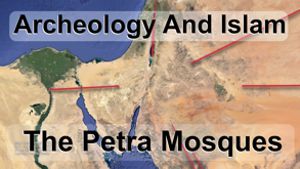
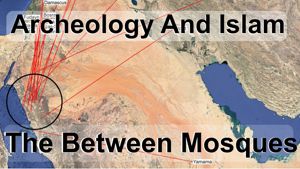
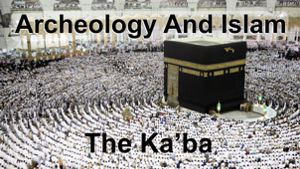
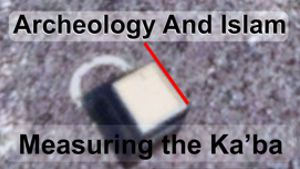

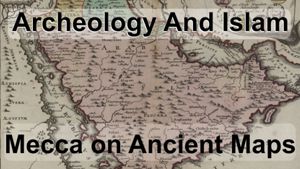
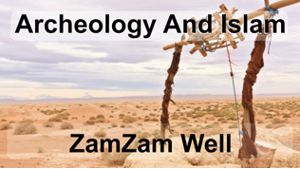
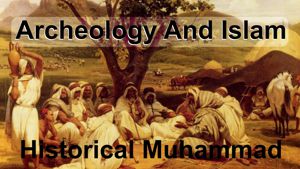
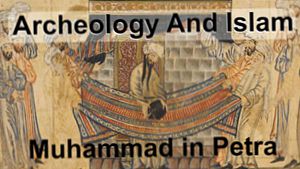
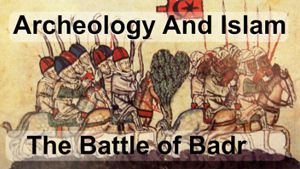
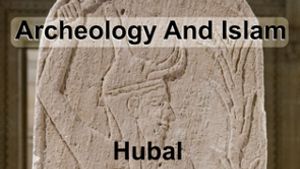
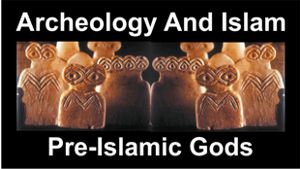
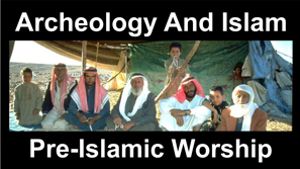

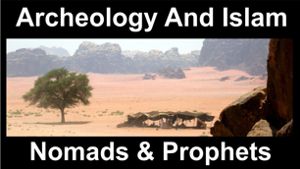

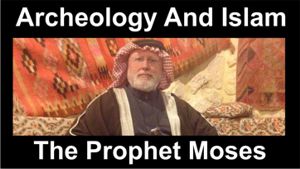


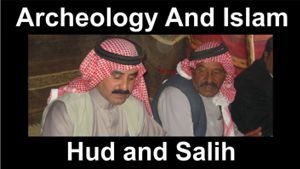
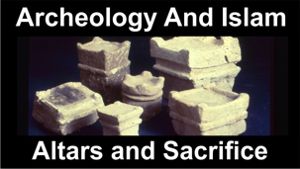

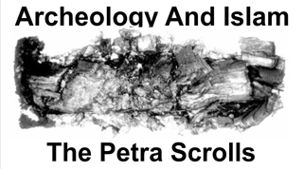
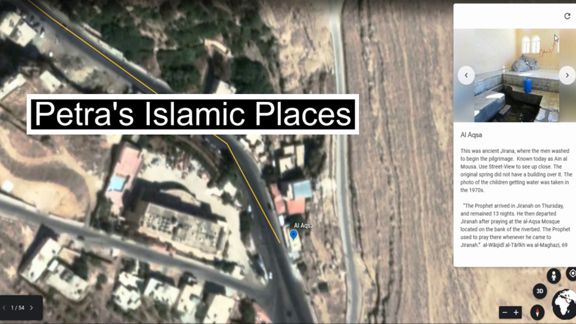

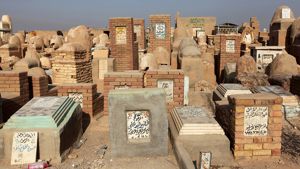
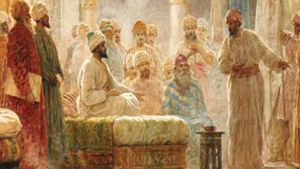
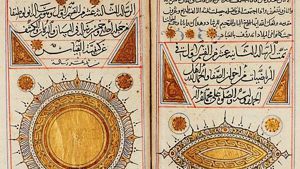
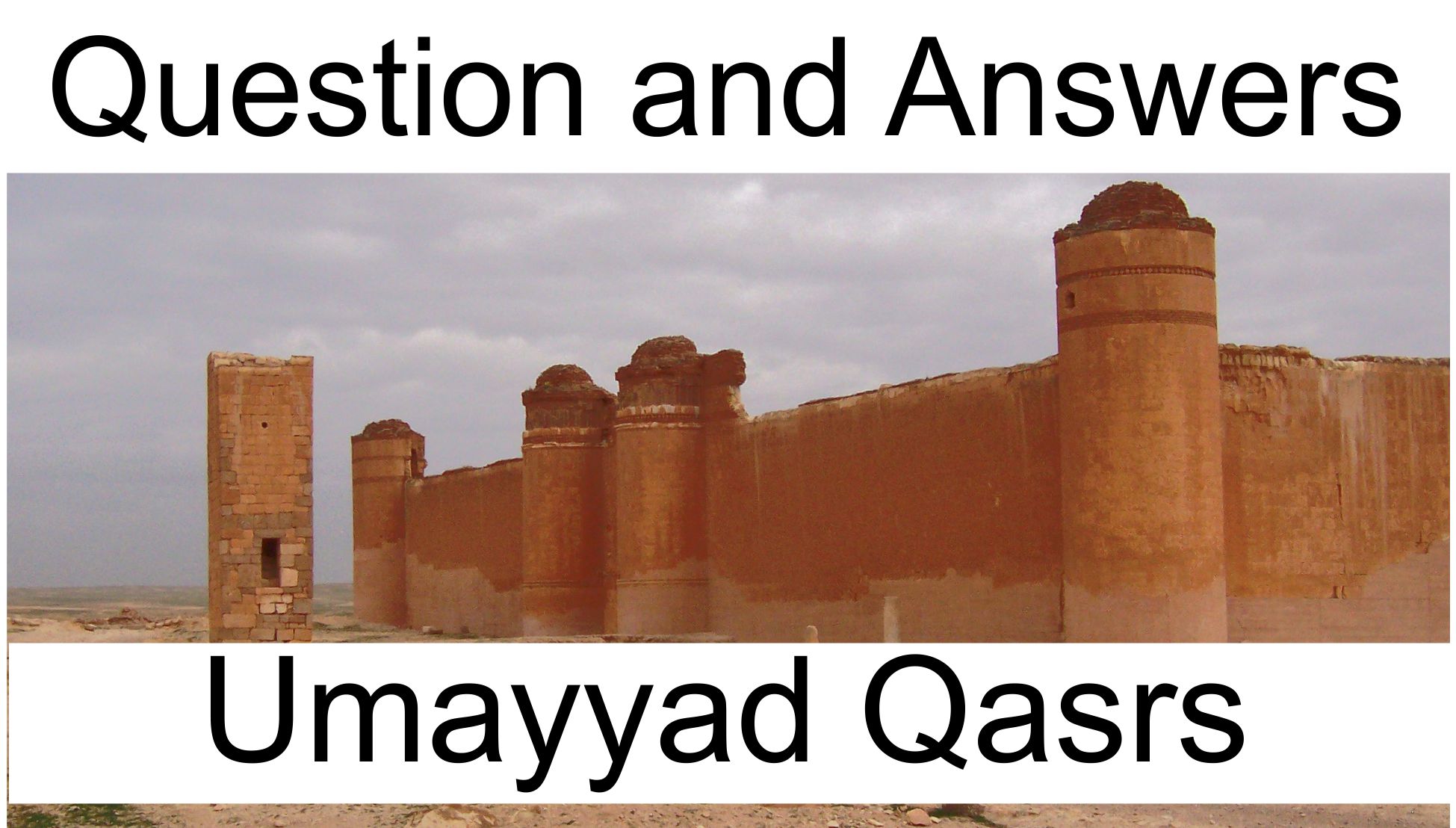
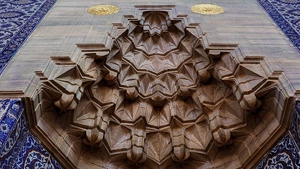
Page Discussion
Membership is required to comment. Membership is free of charge and available to everyone over the age of 16. Just click SignUp, or make a comment below. You will need a user name and a password. The system will automatically send a code to your email address. It should arrive in a few minutes. Enter the code, and you are finished.
Members who post adverts or use inappropriate language or make disrespectful comments will have their membership removed and be barred from the site. By becoming a member you agree to our Terms of Use and our Privacy, Cookies & Ad Policies. Remember that we will never, under any circumstances, sell or give your email address or private information to anyone unless required by law. Please keep your comments on topic. Thanks!